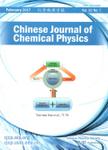Structures and Hydrogen Bonding Interactions in Urea-water System Studied by All-atom MD Simulation and Chemical Shifts in NMR Spectrum
Structures and Hydrogen Bonding Interactions in Urea-water System Studied by All-atom MD Simulation and Chemical Shifts in NMR Spectrum作者机构:Lab of Physical Chemistry College of Pharmacy Guangdong Pharmaceutical University Guangzhou 510005 China
出 版 物:《Chinese Journal of Chemical Physics》 (化学物理学报(英文))
年 卷 期:2009年第22卷第5期
页 面:511-516,I0002页
核心收录:
学科分类:081704[工学-应用化学] 07[理学] 070304[理学-物理化学(含∶化学物理)] 08[工学] 0817[工学-化学工程与技术] 0703[理学-化学]
基 金:This work was supported by the National Natural Science Foundation of China (No.20903026) the Doctoral Scientific Research Foundation of the Natural Science Foundation of Guangdong Province (No.7301567) and the Research Foundation of Guangdong Pharmaceutical University (No.2006YKX05)
主 题:All-atom simulation Chemical shift Viscosity Urea-water system Hydrogen bond
摘 要:The interactions and structures of the urea-water system are studied by an all-atom molecular dynamics (MD) simulation. The hydrogen-bonding network and the radial distribution functions are adopted in MD simulations. The structures of urea-water mixtures can be classified into different regions from the analysis of the hydrogen-bonding network. The urea molecule shows the certain tendency to the self-aggregate with the mole fraction of urea increasing. Moreover, the results of the MD simulations are also compare with the chemical shifts and viscosities of the urea aqueous solutions, and the statistical results of the average number hydrogen bonds in the MD simulations are in agreement with the experiment data such as chemical shifts of the hydrogen atom and viscosity.



